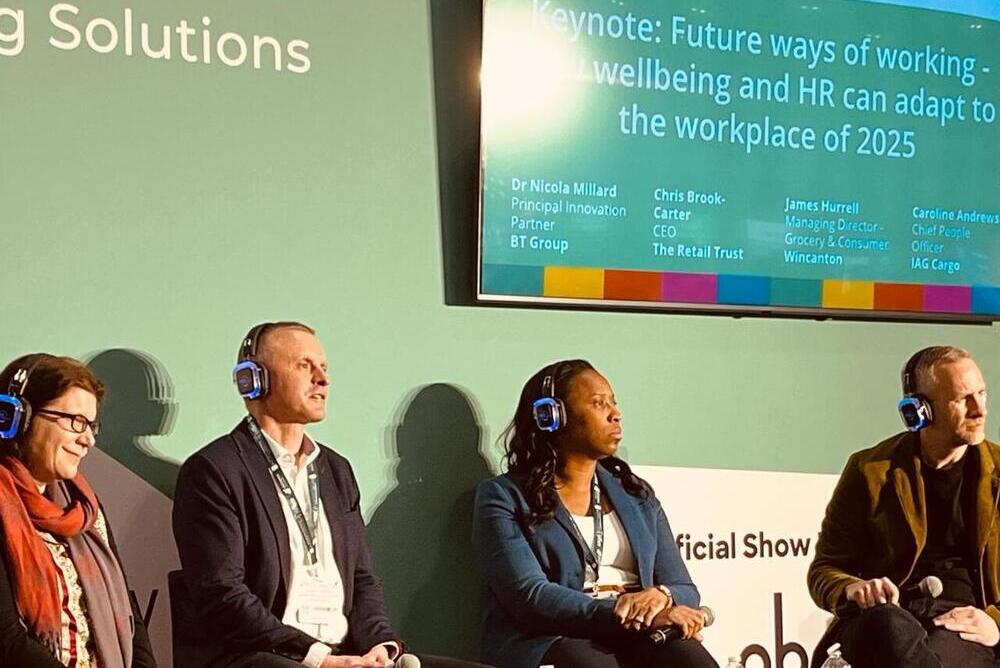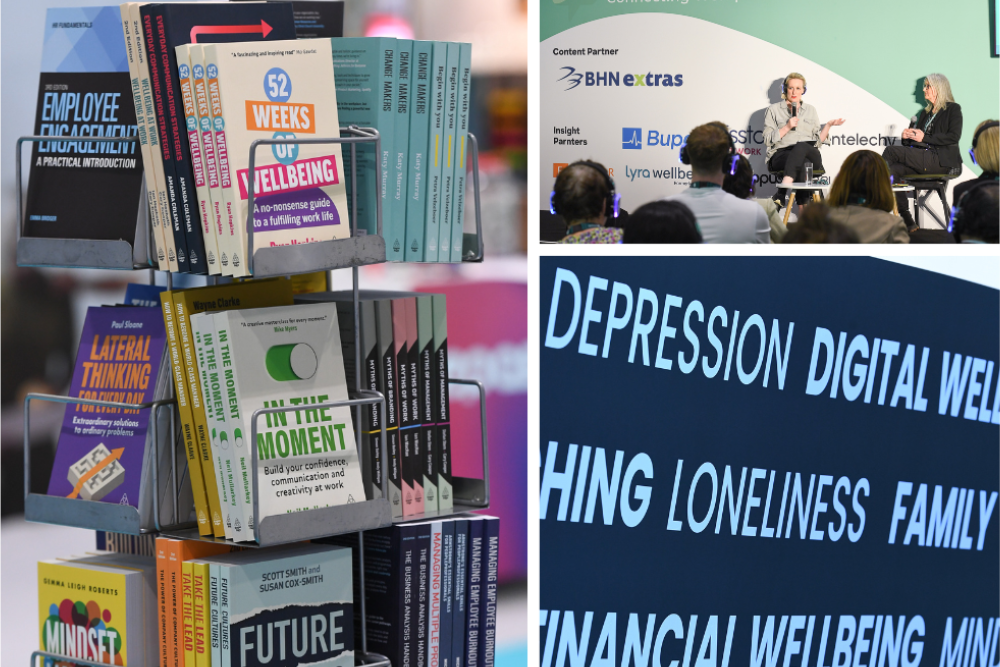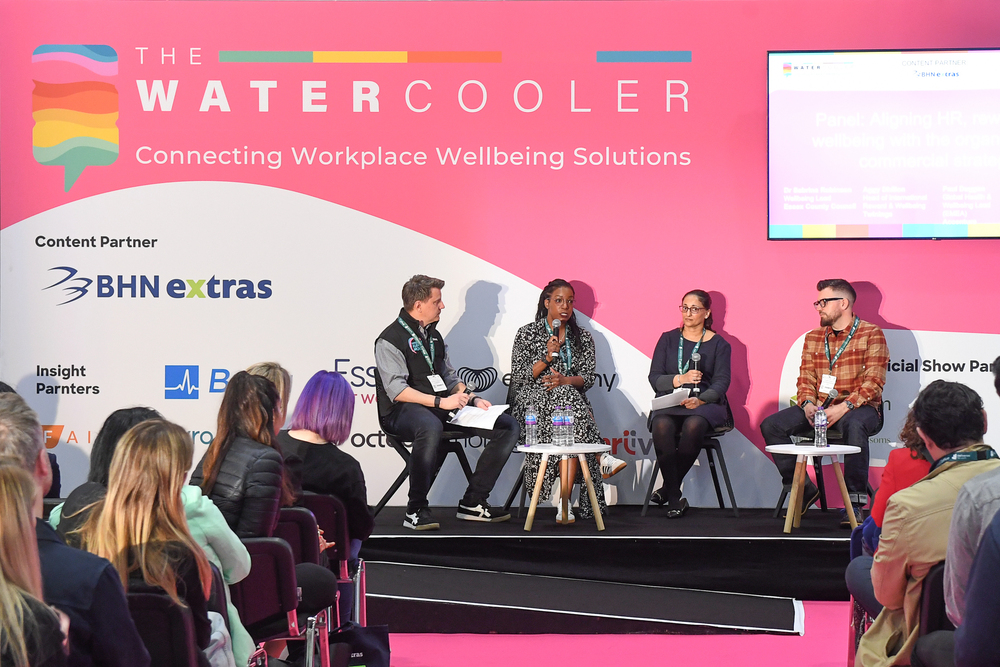The past twelve months have been tricky, to say the least. Political turmoil. Economic uncertainty. Devastating wars in Ukraine and Gaza. A cost of living crisis in the UK, and throughout the world. With this backdrop, it’s no wonder our collective wellbeing has taken a hit: sickness absence has reached an all time high in Britain, according to The Office for National Statistics (ONS) with more than 2.6 million people out of work due to ill health.
The Chartered Institute for Personnel and Development (CIPD) found a similar soar in its survey, saying 76% of those are off work due to stress and 63% of longterm absences are due to mental health.
But what does all this mean for employee health and wellbeing?
As we approach the end of the year, we took the opportunity to talk to a range of wellbeing leaders to find out what, for them, were the golden nugget trends of workplace wellbeing in 2023.
1. Mental health needs to continue to be top of the wellbeing agenda
The Covid-19 pandemic put employee mental health, more than ever before, squarely at the top of the agenda for employers.
This rise of mental health as a workplace priority has continued into 2023, and will continue, say experts.
“What was new was that mental health first aiders became almost standard in a lot of industries,” says Dr Jeanette Cook, Principal Strategic Wellbeing Consultant at AON. “In 2023, we took huge steps forward in mental health. It has definitely got more rigorous and there’s more awareness about how to get support.”
As well as the ‘traditional’ mental health first aiders, Cook adds that some companies in 2023 have been also creating “financial wellbeing ambassadors”, given the cost of living crisis, to target this specific pillar of wellbeing.
2. The rise of the Chief Wellbeing Officer and bringing ‘Wellbeing’ to the Health and Safety remit
Additionally, AON’s Cook adds that another trend over the last 12-18 months has been the creation of the “Chief Wellbeing Officer”. Indeed in its Global Wellbeing Survey 2022 – 2023, AON identified the ‘Rise of the Chief Wellbeing Officer’ as one of its ‘trends to watch’ this year.
Alongside this has been another emerging trend of adding the ‘wellbeing’ tag to health and safety roles, indicating the current triple pronged approach to employee wellbeing.
As Ruth Pott, Head of Workplace Wellbeing, BAM, says, in 2023 there was a “realisation that wellbeing is intrinsically linked to safety and overall business performance; it underpins all that any business does”.
3. Growing recognition of the connectedness of pillars of wellbeing & potential to create synergies between them
Many companies talk about their pillars of wellbeing which often form the basis of awareness campaigns and initiatives. For instance, mental, physical, financial and environmental and social.
However, lately there’s been a shift towards a more integrated approach where multiple ‘pillars’ are addressed together.
As Dr Tracey Leghorn, Chief Businesses Services Officer of SUEZ, says, she feels passionate about taking a “holistic” approach where “rather than individual elements, it’s thinking about the whole person, inside and outside of work”.
One way that SUEZ has leveraged synergies is in, for example, the way it’s combined its charity fundraising activity (which comes under the ‘social’ pillar) with a focus on physical health (funds are raised on the back of physical challenges).
This is also something BAM talked about in this article bringing social wellbeing and physical activity together.
AON’s Cook adds:
“Wellbeing is interconnected. If you have financial worries, this could impact your sleep and your physical health. It will also make you less prone to making good decisions and more likely to have accidents. The whole cycle is linked. You can’t really look at financial wellbeing without considering the effect on other aspects like physical and emotional health. They all feed into each other and there’s a realisation now of the need to look at the whole person.”
4. The increasing realisation that employers need to support not just employees, but their families and communities too
Gathering pace throughout 2023 we’ve seen employers include families and communities in their wellbeing packages, often linking this into its social value targets and ESG responsibilities.
For BAM’s Pott, 2023 shone a line in particular of the need to support children of employees and young employees:
“There’s a greater appreciation in the workplace of the increasing mental health and wellbeing challenges of children and young people – so children of existing employes and the support they need, and the obligations upon employers to meet the demands of new entrants.”
At Make A Difference Media we’ve case studied numerous employers recently which have launched initiatives which look after the wellbeing of family members and communities in which they operate.
For instance Royal Mail is now giving employees, their partners and children 24/7 access to an online GP, physiotherapy, unlimited mental health consultations and lifestyle coaching including nutrition and personal training support. Chevron Traffic Management has recently launched a similar benefits programme.
An other example is L’Oreal’s Health and Safety programme, which extends to employee families and communities. The cosmetics giant has noted an increased interest in safety at work due to the fact colleagues can see their employer caring for their families.
5. There’s been progress on reasonable adjustments
How to better make reasonable adjustments to help staff with mental health difficulties to remain in, or return to, work, has been a key trend and learning, according to Nick Pahl, CEO, Society of Occupational Medicine.
The landmark publication on this front, he says, is ACAS’s Mental health at work: reasonable adjustments resource.
6. Getting employees back in the office / doing more face to face contact
This was a key trend – albeit controversial – as some companies made mandates for their employees to get back into the office, some even linking this to bonuses.
As Helen Moran, Head of Learning Solutions at Adviser Plus says “the debate around the balance between remote work and office-based work gained momentum in 2023”.
Most companies found themselves, as she says, “grappling with finding the optimal mix that caters to individual preferences and ensures a supportive work environment” and she predicts this will continue:
“Striking the right balance will be a key consideration for leaders, with implications for wellbeing, productivity and engagement.”
Sharon O’Connor, Global Lead Employee Wellbeing, Novartis, agrees that 2023 highlighted the range of “interdependencies wellbeing has”:
“A good example is hybrid working policies and how these can either contribute to or detract from an employee’s sense of belonging, trust, autonomy and empowerment – all of which have an impact on their wellbeing.”
Some companies chose to make their preference for back-to-the-office work very clear in 2023. For example, SUEZ focused much effort on getting its employees back to together regularly in 2023.
According to Dr Leghorn this is because face to face contact is “extremely important” for social wellbeing, which it measures through an external social value calculator called Loop.
“It’s why we aren’t an organisation that is a supporter of full time working at home. We want our people to interact together in person,” she says.
Futures Alchemist Charlotte Kemp says companies have been grappling with, and will continue to face decisions around, the issue of whether home or office working works best for the business and its employees.
There is no one size fits all answer to this conundrum and Kemp outlines the different possible scenarios that employers might face when deciding on their strategy:
- Having had the experience of remote teams, not every company wants to return to the expense of an office and to a tired, commuting workforce. Some have found more creativity, innovation and better experiences with their remotes teams
- Some companies may have come to understand and support the needs of workers who are not neurotypical and who experience anxiety or discomfort in a busy workplace but who are amazing contributors when working from their own environment
- Some companies or departments cannot operate without people at the workplace to deal with customers, patients, equipment and machinery etc. Some have created a hybrid option, allowing work from home for a number of days, but in office meetings and engagement on a regular basis to keep the teams engaged
- Employers getting interested in what’s next with supporting women’s health – eg. around endometriosis
- More interest in creating ease of access, personalisation and flexibility in wellbeing support
7. The increasing acknowledgement of the intersectionality between wellbeing and DEI
As Arti Kashyap-Aynsley, Global Head of Wellbeing and Inclusion at Ocado says, this link was increasingly recognised in 2023 and she predicts will be a leading focus in 2024 (watch this space in January for a full feature on this trend!).















